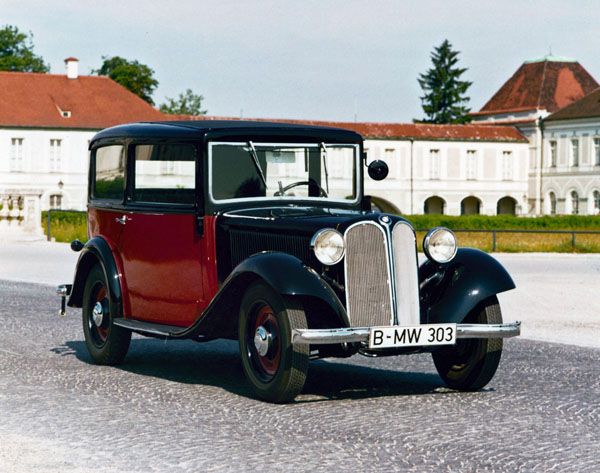BMW – the Bayerische Motoren Werke – launched their first ‘300 Series car’ in 1933. The company’s start as a manufacturer of motor vehicles goes back to 1928 when they acquired the Dixi marque produced at Eisenach. Prior to its entry into car manufacture BMW produced aero engines and motorcycles but in 1928 they entered the motor vehicle business where their main competition came from DKW, Hanomag and Opel.
The first car to carry the BMW badge was the 3/15 model introduced in 1929. This was a slightly modified version of the Dixi 3/15 which was in turn based on, and almost identical to, the British made Austin Seven. After the takeover by BMW these were slowly modified to increase their power output from 11 to 13 kilowatts.
BMW had never intended this car to represent its future, rather only as a stopgap measure while they developed their plans. In 1932 they released the 3/20 which was quite a different car from the Austin-based 3/15 and lost its British connection. The mechanics of this car showed the direction in which BMW engineers planned to head from its overhead valve 15 kW engine to its new chassis/suspension layout.
In spite of the Great Depression, BMW released a new car, the 303, in February 1933. This model had a more elegant body style than the 3/15 – gone were the sharp angles, these now replaced by a more rounded body style. As the ‘303 Series’ developed so did some of the characteristic BMW features such as the so-called ‘twin kidney’ style of radiator grille that is still a familiar feature of BMWs produced today.
The 303 used a tubular chassis frame with a beam rear axle supported by half-elliptic springs and featured independent front suspension by transverse leaf springs. In their time this chassis design set standards that rival manufacturers found difficulty in matching but it had been fully tested in their earlier 3/20 model.
The engine of the 303 was a 1173 cc, smooth, long stroke six. It developed 22 kW at 4000 rpm and had a bore of 56 mm and a stroke of 80 mm. This same engine was used in 300 series cars right up to the mid-1950s but was extensively modified and developed during that time so that its peak power eventually tripled compared with the original 22 kW. This was mainly achieved by a gradual increase in bore (to 68 mm) and stroke (to 96 mm) dimensions.
